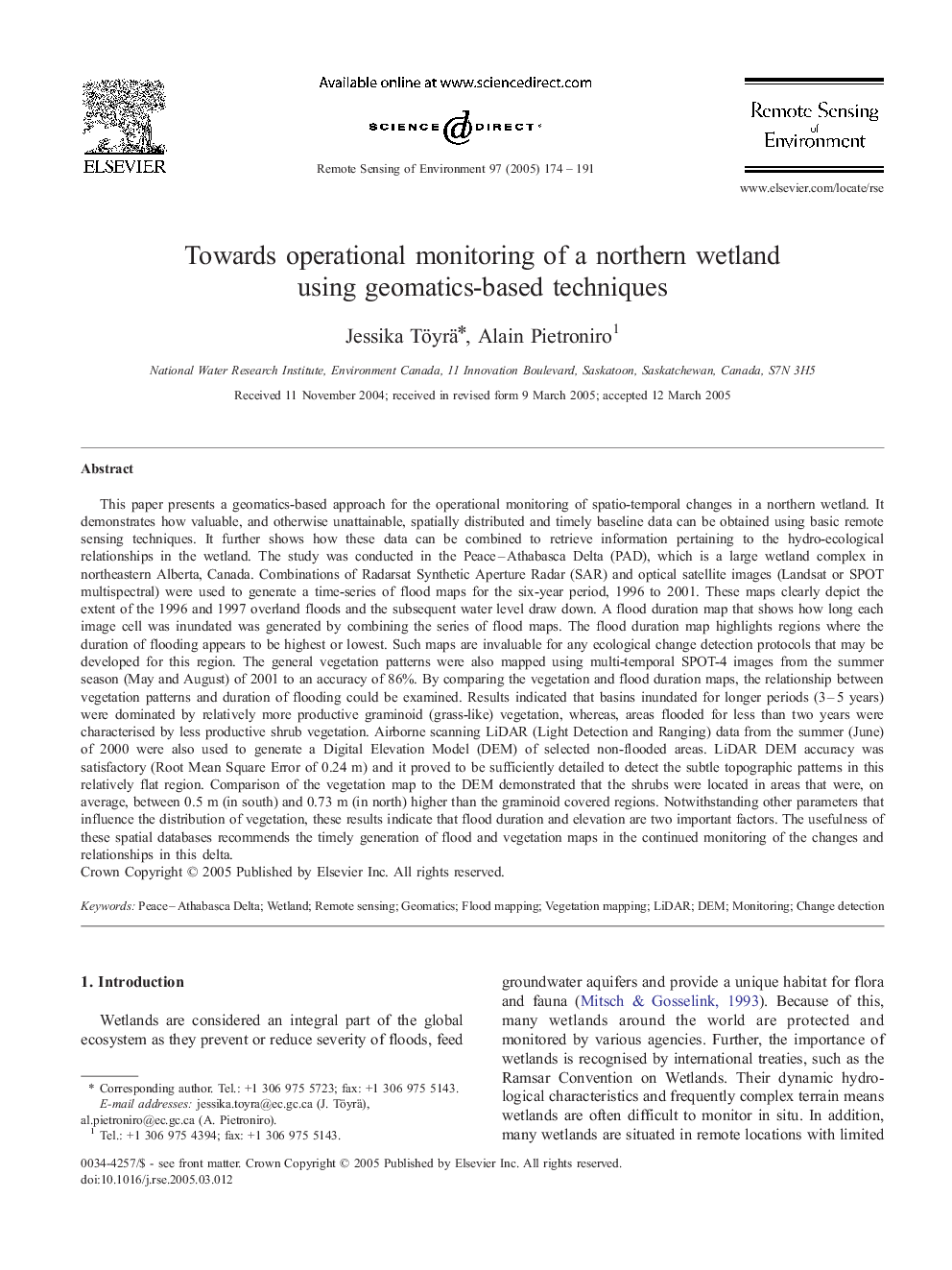| Article ID | Journal | Published Year | Pages | File Type |
|---|---|---|---|---|
| 10114156 | Remote Sensing of Environment | 2005 | 18 Pages |
Abstract
This paper presents a geomatics-based approach for the operational monitoring of spatio-temporal changes in a northern wetland. It demonstrates how valuable, and otherwise unattainable, spatially distributed and timely baseline data can be obtained using basic remote sensing techniques. It further shows how these data can be combined to retrieve information pertaining to the hydro-ecological relationships in the wetland. The study was conducted in the Peace-Athabasca Delta (PAD), which is a large wetland complex in northeastern Alberta, Canada. Combinations of Radarsat Synthetic Aperture Radar (SAR) and optical satellite images (Landsat or SPOT multispectral) were used to generate a time-series of flood maps for the six-year period, 1996 to 2001. These maps clearly depict the extent of the 1996 and 1997 overland floods and the subsequent water level draw down. A flood duration map that shows how long each image cell was inundated was generated by combining the series of flood maps. The flood duration map highlights regions where the duration of flooding appears to be highest or lowest. Such maps are invaluable for any ecological change detection protocols that may be developed for this region. The general vegetation patterns were also mapped using multi-temporal SPOT-4 images from the summer season (May and August) of 2001 to an accuracy of 86%. By comparing the vegetation and flood duration maps, the relationship between vegetation patterns and duration of flooding could be examined. Results indicated that basins inundated for longer periods (3-5 years) were dominated by relatively more productive graminoid (grass-like) vegetation, whereas, areas flooded for less than two years were characterised by less productive shrub vegetation. Airborne scanning LiDAR (Light Detection and Ranging) data from the summer (June) of 2000 were also used to generate a Digital Elevation Model (DEM) of selected non-flooded areas. LiDAR DEM accuracy was satisfactory (Root Mean Square Error of 0.24 m) and it proved to be sufficiently detailed to detect the subtle topographic patterns in this relatively flat region. Comparison of the vegetation map to the DEM demonstrated that the shrubs were located in areas that were, on average, between 0.5 m (in south) and 0.73 m (in north) higher than the graminoid covered regions. Notwithstanding other parameters that influence the distribution of vegetation, these results indicate that flood duration and elevation are two important factors. The usefulness of these spatial databases recommends the timely generation of flood and vegetation maps in the continued monitoring of the changes and relationships in this delta.
Keywords
Related Topics
Physical Sciences and Engineering
Earth and Planetary Sciences
Computers in Earth Sciences
Authors
Jessika Töyrä, Alain Pietroniro,
